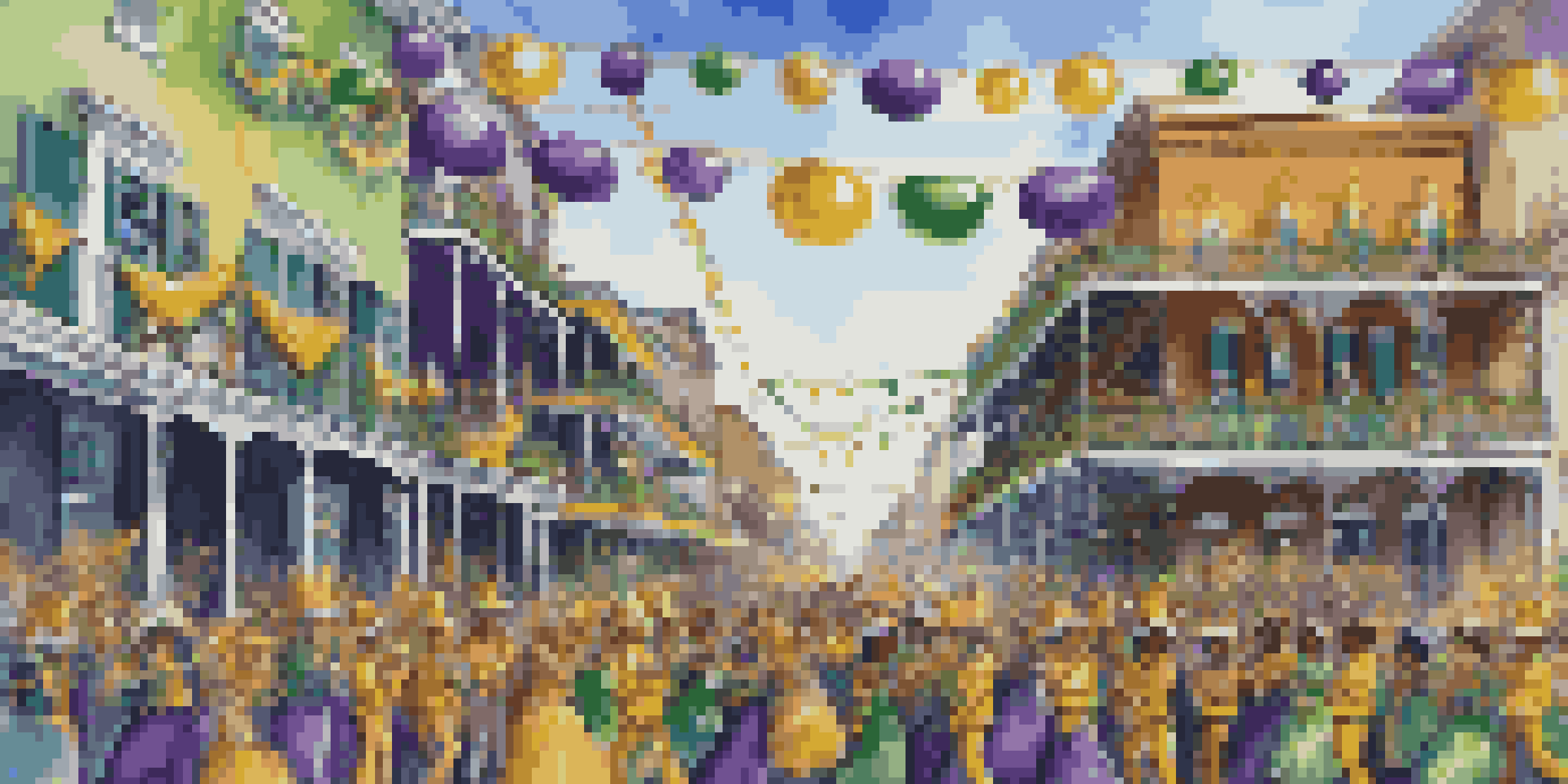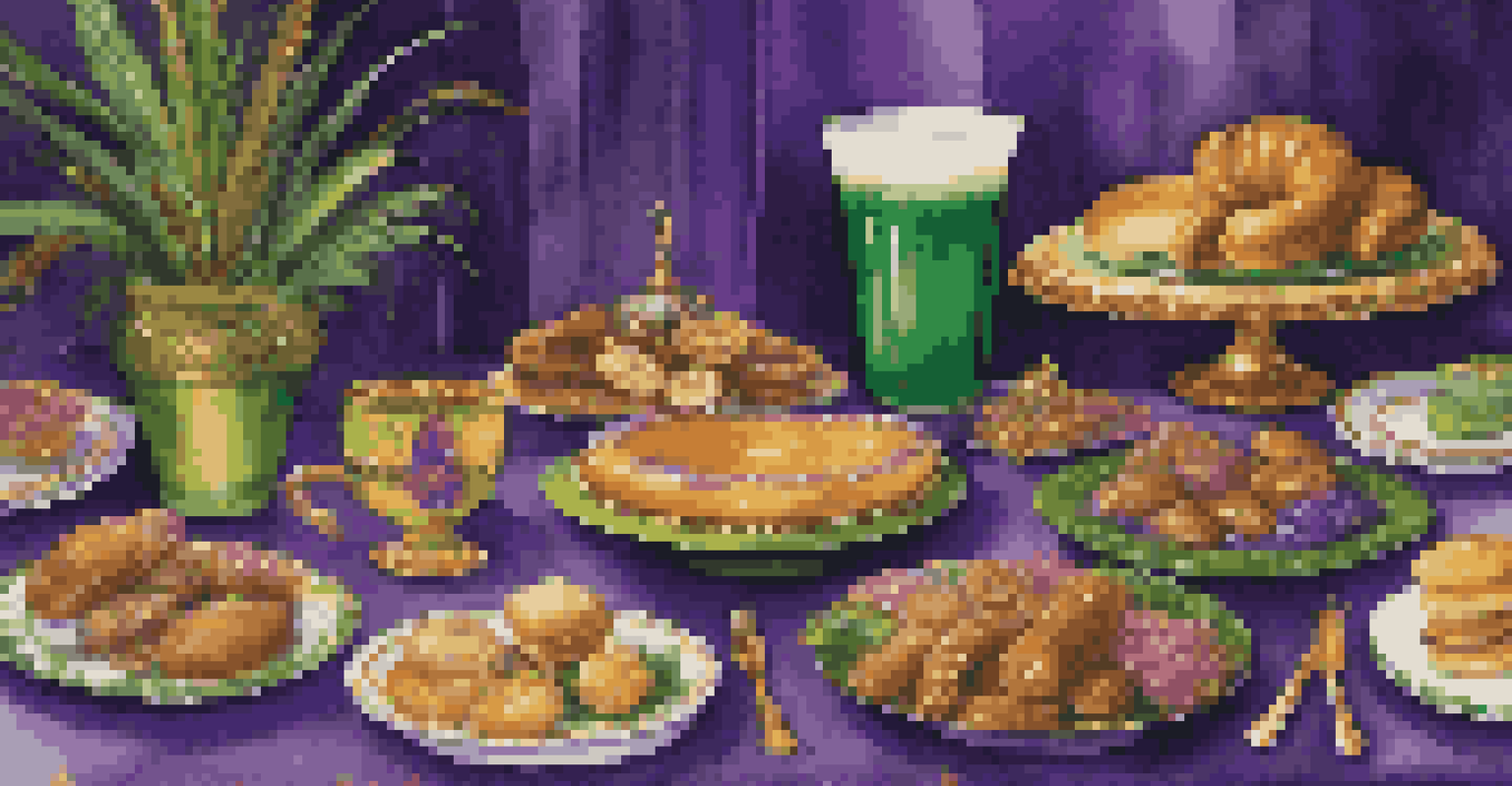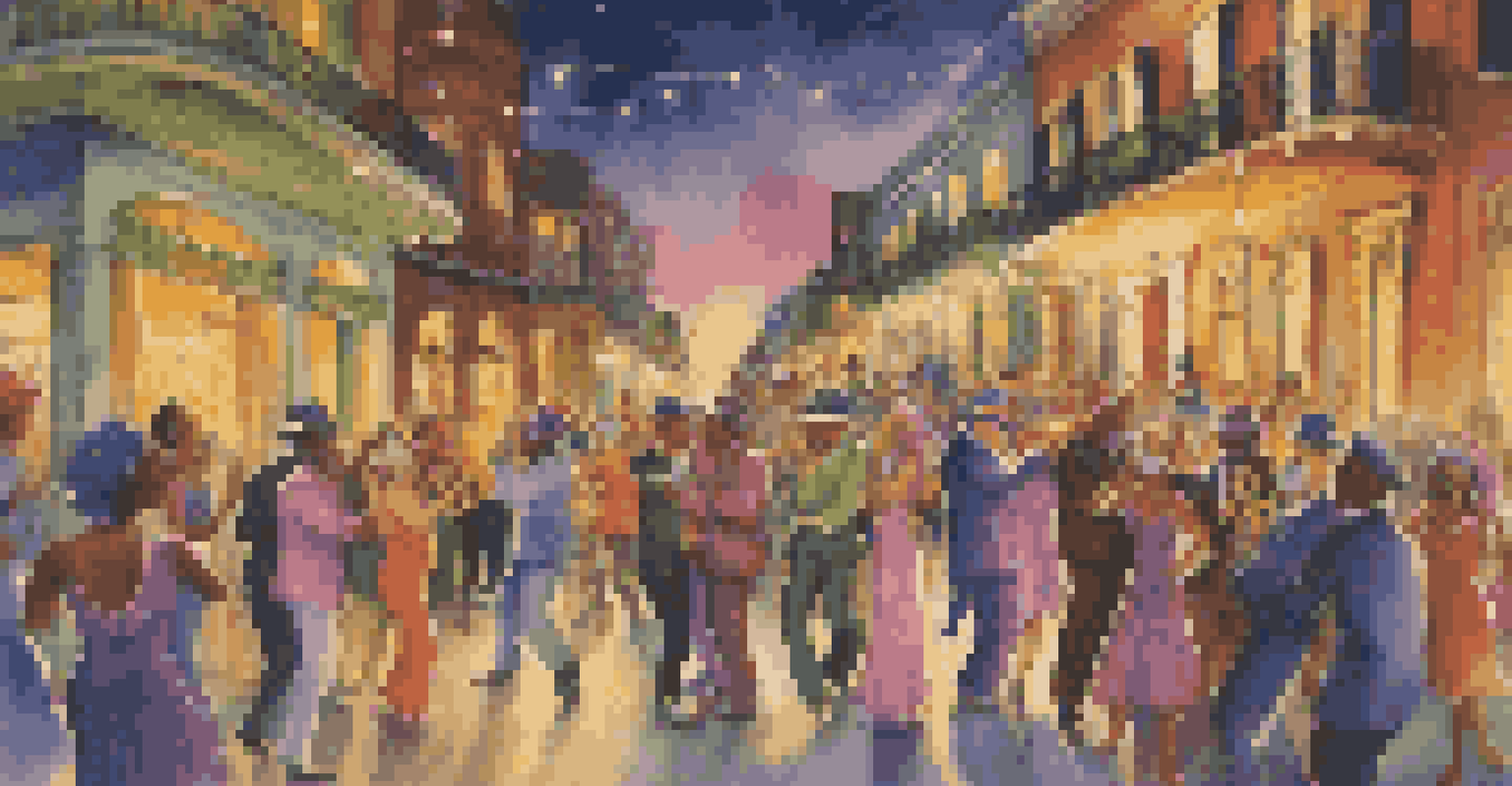Explore the Unique Traditions of the Mardi Gras in New Orleans

The Origins of Mardi Gras: A Historical Overview
Mardi Gras, or 'Fat Tuesday,' has deep historical roots that trace back centuries. The celebration began in medieval Europe, particularly in France, where it marked the last day of feasting before Lent. When French settlers arrived in New Orleans, they brought these traditions with them, giving the city its unique spin on the festivities.
Mardi Gras is a celebration of life and a deep-rooted expression of New Orleans' culture.
Over time, Mardi Gras evolved into a vibrant celebration that reflects the rich cultural tapestry of New Orleans. It became a time for the community to come together, showcasing their creativity and spirit. The festival's roots in Catholicism and its subsequent embrace of local customs make it a fascinating blend of history and culture.
Today, Mardi Gras is not only a religious observance but also a major cultural event that attracts millions of visitors. The rich history behind the celebration is just the beginning of what makes Mardi Gras in New Orleans so unique.
The Colorful Symbols of Mardi Gras: Purple, Green, and Gold
One of the most recognizable aspects of Mardi Gras is its vibrant color scheme: purple, green, and gold. Each color holds significant meaning; purple represents justice, green symbolizes faith, and gold stands for power. These colors are not just for decoration; they embody the spirit and values of the celebration.

During Mardi Gras, you'll see these colors everywhere—from the costumes and masks to the floats and beads thrown during parades. The use of these colors creates a lively and festive atmosphere that is instantly recognizable. It’s a visual representation of the joy and excitement surrounding the event.
Mardi Gras: A Rich Historical Tradition
Mardi Gras originated in medieval Europe and evolved in New Orleans into a vibrant celebration that combines religious observance with local customs.
Embracing these colors is more than just a tradition; it's a way for participants to connect with the deeper meaning of Mardi Gras. When you wear these colors, you're not just joining a party; you're taking part in a centuries-old celebration that resonates with the community.
The Spectacle of Mardi Gras Parades: A Unique Experience
The parades of Mardi Gras are perhaps the most thrilling aspect of the celebration. Each parade is organized by a 'krewes,' which are social clubs that plan and execute the festivities. These krewes create elaborate floats and throw trinkets, known as 'throws,' to parade-goers, enhancing the interactive experience.
The colors of Mardi Gras—purple, green, and gold—represent the values we hold dear: justice, faith, and power.
As you watch the floats glide by, adorned with dazzling decorations and costumed riders, you can't help but feel the excitement in the air. The energy is infectious, with spectators dancing and shouting for beads and other goodies. Each parade has its own theme, adding to the creativity and surprise of the event.
Attending a Mardi Gras parade isn't just about watching; it's about participating in a communal celebration. The floats, music, and vibrant atmosphere create memories that last a lifetime, making it a must-see experience for anyone visiting New Orleans during this time.
The Role of Masks and Costumes in Mardi Gras Traditions
Masks and costumes are integral to the Mardi Gras experience, adding an air of mystery and excitement. Traditionally, these masks allowed wearers to escape societal norms and express themselves freely. Today, they are a vital part of the celebration, inviting creativity and individuality.
People often spend months preparing their costumes, with many opting for extravagant designs that reflect the spirit of Mardi Gras. From sequined gowns to whimsical outfits, the creativity on display is truly inspiring. Wearing a mask allows participants to immerse themselves in the festivities and join in the revelry without constraints.
Colors Symbolize Mardi Gras Values
The iconic colors of purple, green, and gold represent justice, faith, and power, embodying the spirit of the celebration and connecting participants to its deeper meaning.
The tradition of masking creates a sense of unity among participants, as everyone becomes part of the celebration. Whether you're a local or a visitor, donning a mask and costume can transform your experience, allowing you to embrace the joy and whimsy of Mardi Gras.
Delicious Mardi Gras Foods: A Culinary Journey
Food plays a central role in the Mardi Gras celebration, with a variety of traditional dishes that tantalize the taste buds. One of the most iconic treats is the King Cake, a colorful pastry that contains a hidden plastic baby. Whoever finds the baby is expected to host next year's King Cake party!
In addition to King Cake, other culinary delights such as gumbo, jambalaya, and beignets showcase the unique flavors of New Orleans. The city's diverse culinary heritage shines through during Mardi Gras, with food that reflects its rich cultural influences. Each dish tells a story, adding layers of flavor to the festivities.
Exploring the food of Mardi Gras is like taking a culinary tour of New Orleans. Each bite transports you deeper into the heart of the celebration, making it an essential part of the overall experience. From sweet to savory, the food highlights the joyous spirit of Mardi Gras.
Music and Dance: The Heartbeat of Mardi Gras
No Mardi Gras celebration would be complete without music and dance, which are vital components of the festivities. The lively sounds of jazz, brass bands, and traditional New Orleans music fill the streets, creating an infectious energy. This musical backdrop encourages everyone to join in the celebration, dancing and singing along.
Street performers and musicians often set up throughout the city, adding to the vibrant atmosphere. You’ll find everything from traditional jazz bands to contemporary musicians, showcasing the incredible diversity of New Orleans' music scene. The rhythm of the music invites participants to let loose and embrace the joyous spirit of Mardi Gras.
Community Spirit Unites Celebrants
At its heart, Mardi Gras fosters a sense of community, bringing together locals and visitors to create lasting memories and connections through shared festivities.
The connection between music, dance, and Mardi Gras is undeniable. As the beats pulse through the air, they unite people from all walks of life, creating a shared experience that transcends language and culture. It's this sense of togetherness that makes Mardi Gras a truly unforgettable celebration.
Community Spirit: The Essence of Mardi Gras in New Orleans
At its core, Mardi Gras is about community and togetherness. It's a time when locals and visitors alike come together to celebrate, creating lasting friendships and connections. The sense of unity is palpable, as people from different backgrounds join in the festivities, embracing the joy of the occasion.
Local families often gather to watch parades and participate in celebrations, passing down traditions from one generation to the next. This deep sense of community fosters a welcoming environment, making everyone feel like they belong. It's not just about the parties; it's about creating memories with loved ones and strangers alike.

Ultimately, the community spirit of Mardi Gras is what sets it apart from other celebrations. It's a reminder that, regardless of our differences, we can come together to celebrate life, culture, and the joy of being in New Orleans during this magical time.